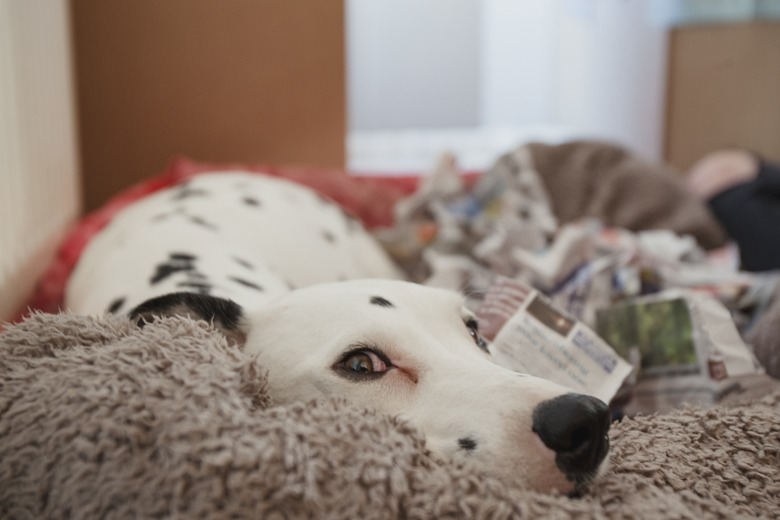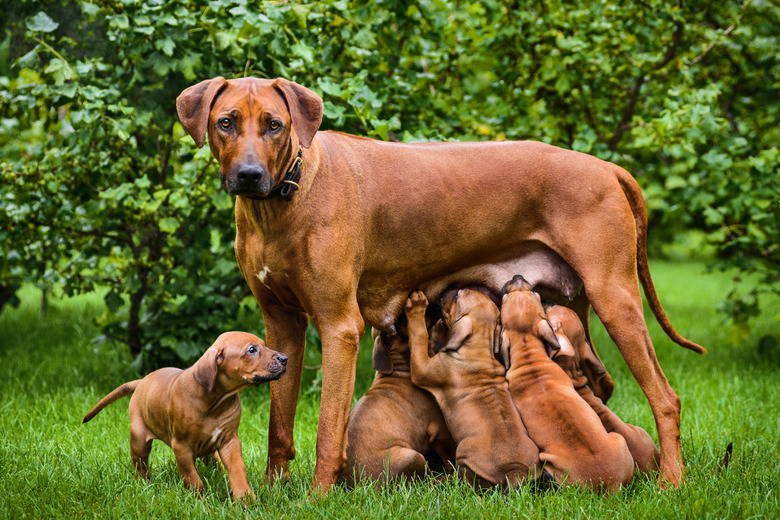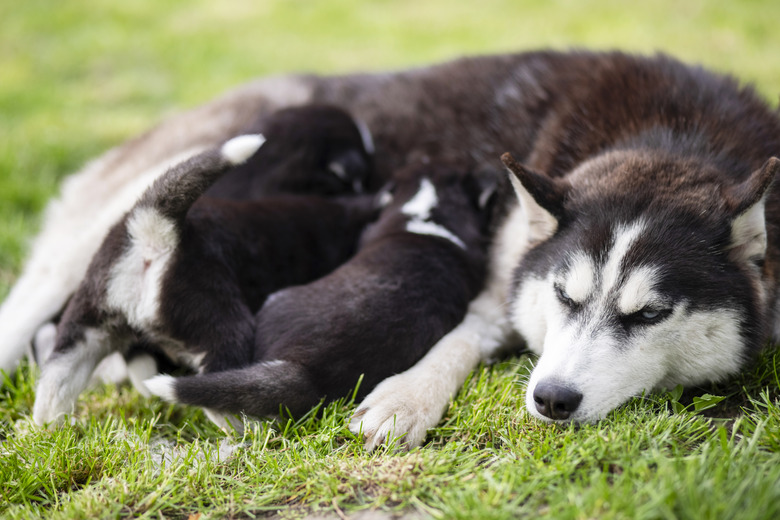Signs That A Dog Is Ready To Go Into Labor
Once you confirm that your dog is pregnant, it is easy to get excited about the puppies you get to welcome into your home. As her due date approaches, watch for dog behavior before labor, which may include your pregnant dog not eating and vomiting as well as nesting behavior. Gestation in dogs is typically between 62 and 64 days. As you approach her due date, watch for symptoms and make sure you have the supplies you need on hand to care for the mom and puppies.
Dog behavior before labor
Dog behavior before labor
As the day approaches, your dog may start nesting to create a safe space where she can deliver and care for her pups. She may or may not do this in the location that you have chosen for her whelping box. If your pregnant dog won't eat, this is another behavioral sign that she is getting ready to go into labor. Some dogs may also vomit. Other common behaviors include panting, pacing, and restlessness.
Regularly monitoring your dog's temperature will provide a warning of impending labor. A normal temperature range for a dog is between 100 and 102.5 degrees Fahrenheit. Her temperature will drop to 99 degrees or lower up to 24 hours prior to labor.
Dog behavior during labor
Dog behavior during labor
During this phase, your dog will actually give birth to her puppies. You may see her abdomen contracting, and she will strain as she pushes out the puppies. After each puppy is delivered, your dog should remove the amniotic sac around the pup, which she will often eat, and she'll chew to break the umbilical cord.
Most dogs will do this without help, but puppies can only survive for a few minutes outside of the womb with the amniotic sac on, so if she doesn't remove it, be prepared to break it open yourself and rub the puppy with a towel until he cries. You can also cut the umbilical cord 1 inch above the belly with dental floss if necessary.
The first puppy should be delivered within two hours of contractions starting. Your dog may deliver multiple puppies in succession, but it is also perfectly normal for your dog to rest after delivering a puppy. However, if the time between puppies is more than four hours, that could indicate a problem that needs veterinary attention. After the final puppy is delivered, she will deliver the afterbirth, or placenta, within about 15 minutes.
When to call a vet
When to call a vet
Sometimes, your dog needs help with the delivery if she experiences complications. If you notice signs of labor, such as the decrease in temperature, and your dog hasn't delivered a puppy 24 hours later, call a veterinarian. You should also call if a puppy hasn't been delivered two hours after contractions start or if more than four hours have passed since she delivered a puppy and you believe there are still puppies in her womb.
Bloody or dark green discharge prior to delivery could indicate a problem. This type of discharge is normal after she has delivered a puppy, however.
While restlessness and pacing are normal, shivering and collapsing are not. If you see these symptoms, seek help to determine the cause and ensure your dog and her pups are safe. Monitor the delivery of the afterbirth and make sure she delivers the same number of placentas as you have puppies. If the placenta is left inside her, it can lead to serious, life-threatening infections.


